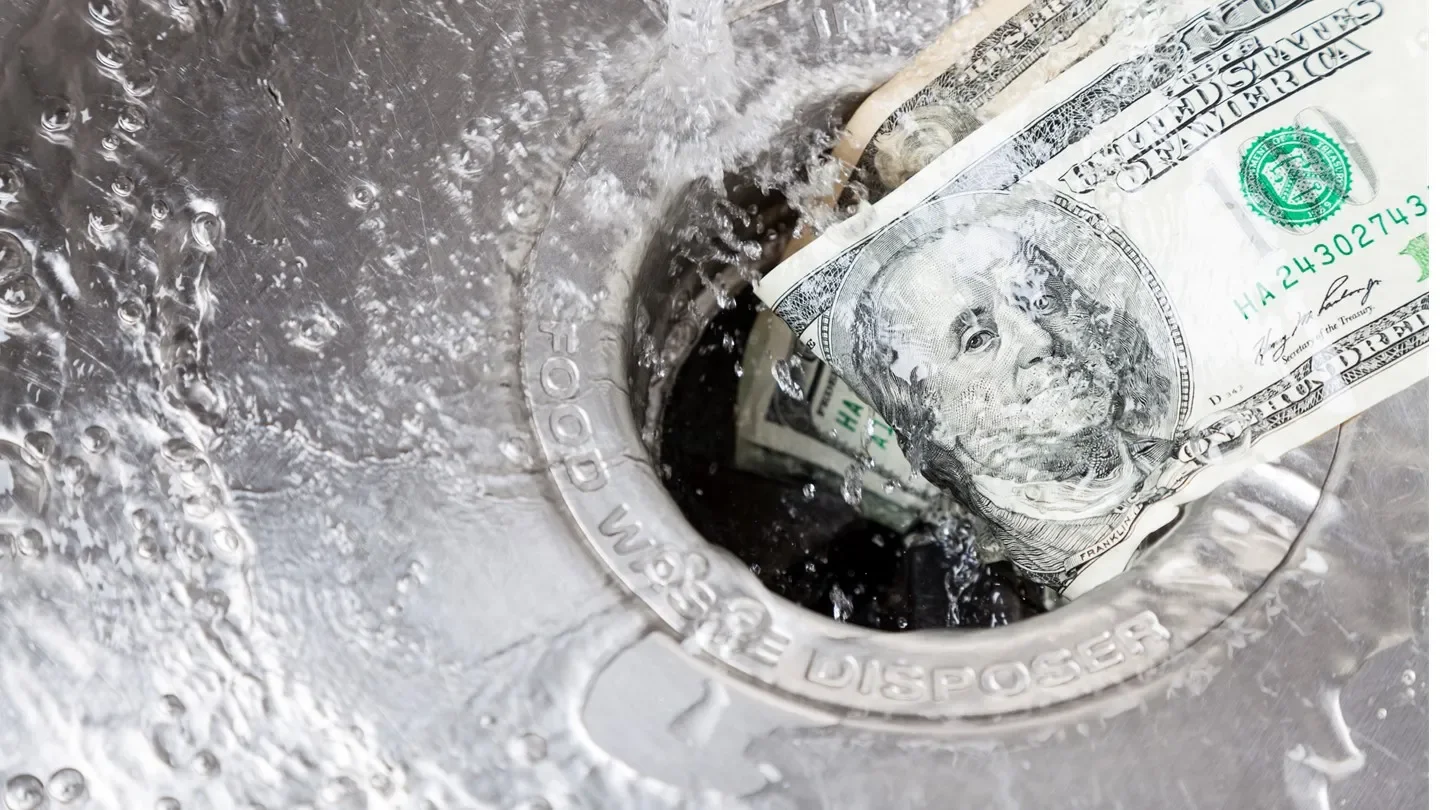The pain is getting real for those long cash
TwentyFour
Key takeaways
- Since the peak of euro interest rates in November 2023, those staying invested in fixed income over cash have enjoyed strong excess returns.
- Rich asset valuations and macro uncertainty has many investors considering defensive cash positions, but lower interest rates mean the projected return on cash will barely keep pace with inflation over the next two years.
- Despite tight spreads, starting yields in credit still look healthy and, in our view, the opportunity cost of holding cash is higher now than it was two years ago.
In November 2023, we estimated that holding cash, as opposed to staying invested, could cost investors 10-30% over a three-year period. At the time, we highlighted that interest rates had reached their cyclical peaks and were likely to decrease from that point. This, we argued, was a compelling entry point for fixed income considering attractive yields, elevated spreads and the potential for healthy capital gains that would be helped by coming rate cuts. By contrast, rolling short-dated cash deposits or “cash-like” assets such as ultra-short government bonds meant a high likelihood of declining returns thanks to reinvesting the proceeds in a declining rate environment.
Almost two years on, current market conditions mean we feel this topic is worth revisiting. With growth in the US and other developed market economies slowing down and risk assets having rallied across 2025 in defiance of macro and geopolitical uncertainty, investors may once again be considering going defensive and holding more cash. However, we believe the case for cash is just as weak today as it was in late 2023.
Cash beat inflation (just), but underperformed bonds
Returns over the last two years highlight how potentially damaging defensive cash positions can be.
Since the start of November 2023, the ICE BofA 0-1 Year German Government Index – a widely used proxy for cash in euros – has generated a total return of 5.6%. By contrast, euro investment grade (IG) corporate bonds (ICE BofA Euro Corporate Index) and euro high yield (HY) bonds (ICE BofA Euro High Yield Index) have generated a total return of 12.3% and 18.5%, respectively, giving excess returns over cash of 6.7% and 12.9%. To put it another way, those staying invested in credit since November 2023 have enjoyed roughly double the return on cash in IG and triple the return on cash in HY (see Exhibit 1).
While this piece will focus on the euro market, the same has been true in sterling, where returns for the corresponding cash, IG and HY indices over the same period were 8.7%, 15.2% and 26.5%, respectively. 1
Starting yield on cash lower than in 2023
That return experience of the last two years does not augur well for cash holders now, given a series of rate cuts from the European Central Bank (ECB) has halved the starting yield on cash (the ECB’s policy rate) from 4% in November 2023 to 2% today.
Meanwhile, Eurozone Consumer Price Index (CPI) inflation has fallen from 2.4% in November 2023 to 2.1% as of August 2025. The ECB’s latest projections see inflation averaging 2.1% in 2025, 1.7% in 2026 and 1.9% in 2027, while market pricing currently predicts its policy rate will remain at roughly 2% through the end of 2027. In other words, the return on cash is expected to barely break even against inflation in the next two years.
At the same time, government bond curves are much steeper today than they were in late 2023 (see Exhibit 2). Depending on their individual risk appetite, investors are now being paid a higher yield premium for extending their exposures (whether that is over two or 10 years). Starting yields in credit – 5.0% on the ICE BofA Euro High Yield Index and 3.1% on ICE BofA Euro Corporate Index, for example – still look healthier than in cash.
Fundamentals justify tight credit spreads in many sectors
Clearly, investors need to weigh the higher starting yield in credit against current market valuations, with strong demand for corporate debt across 2025 having driven credit spreads well below their medium-term averages. One argument in favour of cash would be that with macro uncertainty still high, spread widening could bring periods of mark-to-market losses for credit where cash will outperform. In HY bonds, particularly in lower rated segments, default risk is also a key consideration when economies are slowing.
However, the question is whether these tight spread levels are justified by fundamentals. Despite US tariff levels far exceeding most observers’ worst-case scenarios at the start of the year, hard economic data in recent months has proven resilient.
While projections for US growth in 2025 remain well below where they began the year, the more recent trend has been a gradual upgrade of estimates across developed markets (see Exhibit 3). The Eurozone, boosted by the prospect of increased government spending driven by Germany, has actually seen its growth outlook tick up slightly versus the start of the year. This month, the ECB increased its own estimate for Eurozone growth in 2025 from 0.9% to 1.2%.
In terms of credit fundamentals, while we have seen some signs of stress in specific sectors such as chemicals and autos, in general both corporate and consumer balance sheets look to be in good shape. Importantly, European banking sector earnings and fundamentals have also looked strong across 2025, as evidenced by a string of recent rating upgrades, which gives us more comfort around the outlook for higher yielding assets such as bank Additional Tier 1 (AT1) bonds.
In other words, we think rich valuations in credit are broadly justified by fundamentals and the current, recently improved, macro outlook. While spreads are tight, yields remain elevated relative to history, so the carry involved with staying invested in credit looks more compelling to us than the projected real return on cash.
Remarkably, it is worth noting that despite the tightening in credit spreads over the last couple of years, at 1.12% the current excess yield of the euro IG index over cash is now higher than it was in November 2023 (0.79%), due to the decline in interest rates.
Cash on the sidelines is significant
Despite the decline in interest rates, cash positions have continued to build across 2025. Net inflows to European money market funds were €89bn in the first six months of the year, following a record net inflow of €223bn in 2024 and €169bn in 2023, according to data from the European Fund and Asset Management Association (EFAMA). As of end-June 2025 the total assets held by these funds stood at €2.04tr, a 21% increase from November 2023. For context, the EFAMA data shows bond funds have also been in demand with their net assets having grown 19% over the same period to €3.7tr.
In our view, the amount of cash sat on the sidelines of the fixed income market has been a key driver of the consistent tightening of credit spreads over recent months. In a year punctuated with negative economic and geopolitical headlines, periods of spread widening have been short-lived, partly because of the sheer weight of dry powder sat with investors who are ready to “buy the dip.”
Naturally, we would not expect to see a complete rotation out of money market funds and into alternative assets, since they can serve many purposes within the mandates of a variety of investors. However, considering the erosion of projected real returns in money markets, even a partial rotation out of money markets and into bond funds could provide a further tailwind to the asset class and another pillar of support for spreads.
Given growth projections have moved higher and the threat of recession is receding, unless the macro picture changes dramatically, waiting for a large spread widening event to put money to work in fixed income looks a rather hopeful strategy.
Can investors afford to be long cash?
It is arguably not a surprise that more investors have been taking defensive cash positions in recent months. Given the surge in risk asset valuations (particularly in US equities) and the lingering macro uncertainty, many are questioning whether markets are becoming complacent.
However, with fundamentals supporting the case for credit, and in an environment where some inflation is projected to remain entrenched in the economy for some time yet, we believe the focus should increasingly be on the potential real return investors can achieve from their asset allocation. In this context, within fixed income at least, staying long cash appears to be a poor choice.
In November 2023 we concluded by saying that the opportunity cost of staying in cash was “very high indeed.” With euro rates half what they were at that time, we can’t say we think the opportunity cost has reduced.
1 ICE Indices, data as at 22 September 2025. Past performance is not a reliable indicator of current or future performance. Included for illustration purposes only. It is not possible to invest directly into an index and they will not be actively managed, and no fees or expenses are reflected.
Important information: The views expressed represent the opinions of TwentyFour as at 24 September 2025, they may change, and may also not be shared by other members of the Vontobel Group. This article does NOT express any political views or endorsements, but rather aims to objectively analyse the economic factors and implications. The analysis is based on publicly available information as of the date above and is for informational purposes only and should not be construed as investment advice or a personal recommendation.
Any projections, forecasts or estimates contained herein are based on a variety of estimates and assumptions. Market expectations and forward-looking statements are opinion, they are not guaranteed and are subject to change. There can be no assurance that estimates or assumptions regarding future financial performance of countries, markets and/or investments will prove accurate, and actual results may differ materially. The inclusion of projections or forecasts should not be regarded as an indication that TwentyFour or Vontobel considers the projections or forecasts to be reliable predictors of future events, and they should not be relied upon as such. We reserve the right to make changes and corrections to the information and opinions expressed herein at any time, without notice.
Past performance is not a guarantee of future results. Investing involves risk, including possible loss of principal. Value and income received are not guaranteed and one may get back less than originally invested.
TwentyFour, its affiliates and the individuals associated therewith may (in various capacities) have positions or deal in securities (or related derivatives) identical or similar to those described herein.


